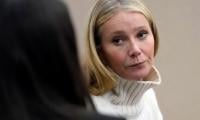ISLAMABAD: Pakistan’s overall literacy rate remains static at 58 percent with literacy rate of males 70 percent and 48 percent of females, as due to the Population and Housing Census, the Pakistan Social and Living Standards Measurement was not carried out for 2017-18.
Therefore, the Pakistan Economic Survey says that the figures for 2015-2016 should be considered for the current year as well.
According to the Pakistan Economic Survey, 2017-2018, the literacy rate for entire Pakistan, includes ten years old and above is 58 percent. The national net enrollment for primary level for overall Pakistanstood at 54 percent while Punjab leading the rest with 59 percent, followed by Khyber Pakhtunkhwa with 53, Sindh by 48 percent and Balochistan 33 percent.
Similarly, the gross enrollment rate for Pakistan is 87 percent and again Punjab in the lead with 93 percent, Khyber Pakhtunkhwa 88 percent, Sindh 78 percent and Balochistan 60 percent. The gross enrollment for males is 94 percent and 78 percent for females.
Public expenditure on education as a percentage of gross domestic product (GDP) is estimated to be 2.2 percent in financial year 2017 as compared to 2.3 percent of GDP in financial year 2016.
Likewise, the Economic Survey says that the education-related expenditure increased by 5.4 percent to Rs699.2 billion in financial year 2017 from Rs663.4 billion financial year 2016. It noted that the provincial governments also are spending sizeable amount of their annual development plans on education.
A total of 5.1 thousand higher secondary schools/inter colleges with 120.3 thousand teachers were functional in 2016-17. A decrease of 6.1 percent in higher secondary enrolment has been observed as it dropped to 1,594.9 thousand in 2016-17 against 1,698.0 thousand in 2015-16. It is estimated to increase by 9.8 percent i.e. from 1,594.9 thousand to 1750.6 thousand in 2017-18.
The overall education condition is based on key performance indicators such as enrolment rates, number of institutes and teachers which have experienced minor improvement. The total number of enrolments at national level during 2016-17 stood at 48.062 million as compared to 46.223 million during 2015-16. This shows a growth of 3.97 percent and it is estimated to further rise to 50.426 million during 2017-18.
The total number of institutes stood at 260.8 thousands during 2016-17 as compared to 252.8 thousands during last year and the number of institutes are estimated to increase to 267.7 thousands during 2017-18.
The total number of teachers during 2016-17 were 1.726 million compared to 1.630 million during last year showing an increase of 5.9 percent. This number of teachers is estimated to rise further to 1.808 million during the year 2017-18.















